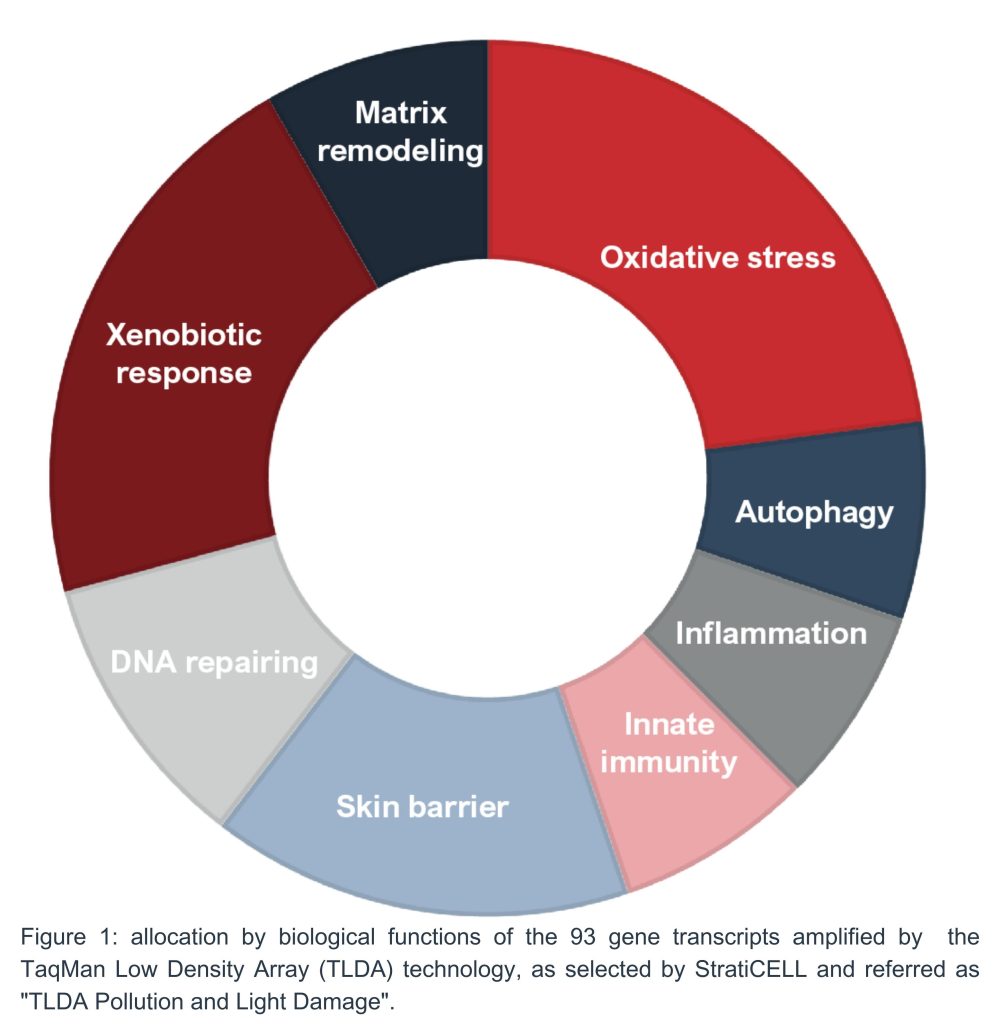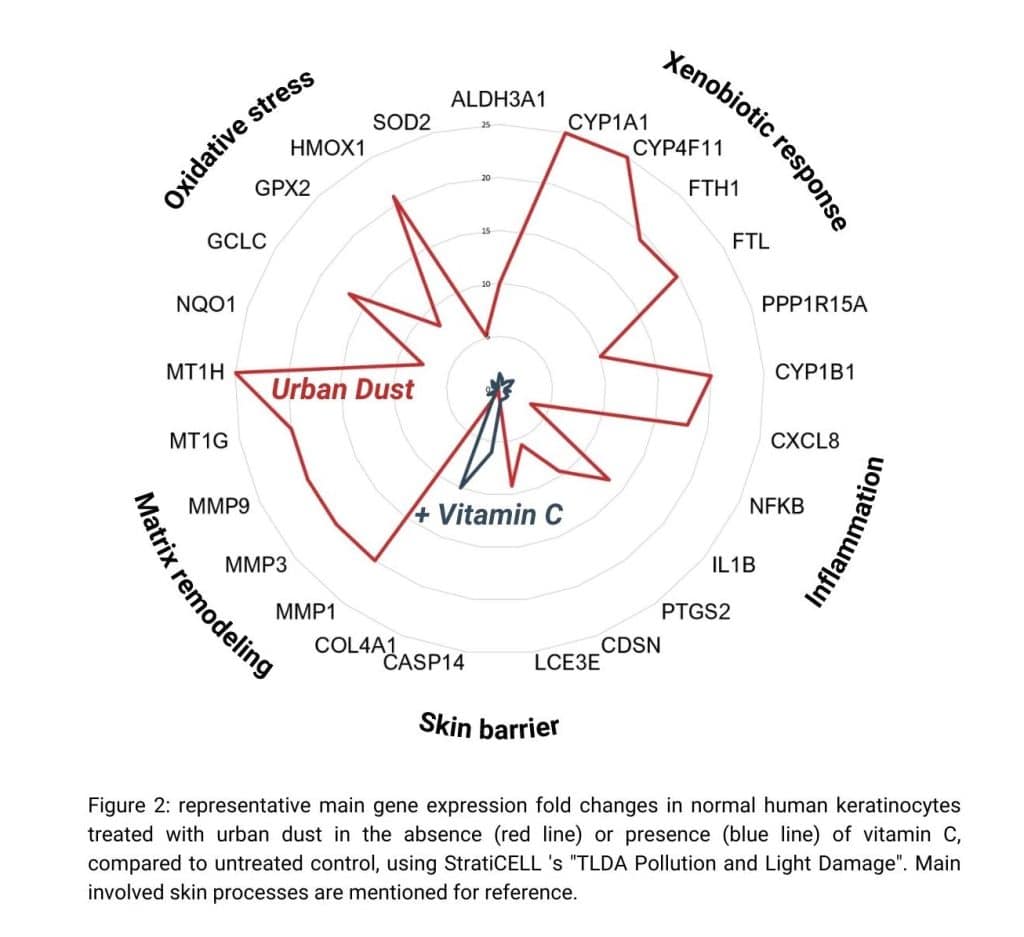StratiCELL Reveals Preclinical Anti-Pollution Efficacy
31 August 2023
Solar radiations and environmental pollutants are deleterious factors impacting skin homeostasis. Prolonged cutaneous exposition to UV light and/or pollution results in accumulation of oxidized and damaged constitutive molecules leading to/
- overproduction of oxygen species,
- impairment in the extracellular matrix,
- critical DNA damage, and
- uncontrolled proinflammatory response.
Activation of xenobiotic metabolising enzymes is important to regulate the detoxification of endogenous and exogenous harmful compounds.
Despite natural cellular mechanisms of resilience, chronic exposure is associated with premature ageing, skin pigmentation and allergic reactions. Various skin care actives and ingredients, like Vitamin C, have proven effective to prevent from adverse events. Because consumers are increasingly aware of the importance of anti-pollution cosmetics, demand for new solutions is growing. In parallel, in vitro skin models and anti-pollution efficacy testing are continuously rising to decipher and understand the mechanisms of action of innovative extracts coming on the market.
Given the extensive cellular pathways involved in the response of the skin to environmental aggressions, the influence of a compound can easily be assessed by analyzing the expression of several key genes. To measure and compare the simultaneous expression of large numbers of genes in a single sample, StratiCELL uses a microplate-based quantitative PCR system known as “TaqMan Low Density Array” (TLDA) from retro-transcripted extracted RNA.
As a reliable partner in efficacy skin testing, StratiCELL has designed a TLDA exploring the efficacy of anti-pollution skin care ingredients. In this gene expression array referred as “TLDA Pollution and Light Damage”, StratiCELL has selected a panel 93 genes playing key roles in the skin response to oxidative stress, DNA repair, matrix remodelling, barrier damages, detoxification and inflammation (FIG 1).
Figure 1.

Expression of genes was assessed in normal human epidermal keratinocytes (NHEK) treated or not with a defined solution of solubilized urban dust (UbD), commercially available, in the absence or presence of Vitamin C used as a protective molecule. Total retro-transcripted RNA were amplified using the “TLDA Pollution and light damage”, to define genes modulated by the UbD treatment, without or with Vitamin C.
Statistical analysis showed a significant upregulation of several genes involved in cell response to xenobiotics, inflammation and oxidation. In response to pollutants, keratinocytes also displayed significant modulation of matrix remodelling MMP genes as well as modification in the expression of key skin barrier genes (FIG 2). Interestingly, the presence of Vitamin C reverted those modulations, with a reduced detoxifying, inflammatory and oxidative responses. Vitamin C also allowed structural matrix and barrier genes to be expressed at their basal level.
Figure 2.

In conclusion, skin exposure to urban pollutants activates several cellular pathways that can be targeted by anti-pollution cosmetics. Using the TLDA technology, StratiCELL offers the possibility to explore a large number of anti-pollution mechanisms in a single experiment.
Downstream of the TLDA analysis, additional functional assays are also available at StratiCELL to address DNA damage and repair, inflammation, the antioxidative response, the detoxification process and the epidermal homeostasis. To know more about all the preclinical testing services available at StratiCELL, visit www.straticell.com.
*publirédactionnel
CONTACT
Christel Boudry – Business Developer







 Follow us on Linkedin!
Follow us on Linkedin!
You must be logged in to post a comment.